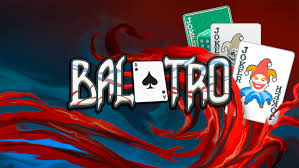The joker card is an intriguing and versatile element found in various card games and popular culture. Often considered a wild card, it embodies unpredictability and creativity. Unlike standard playing cards, the jokercard doesn’t fit into a traditional suit, which allows it to serve different purposes depending on the game or context in which it is used. This article explores the origins, symbolism, and uses of the joker card in gaming, art, and society.
Historical Background
The joker card’s origins can be traced back to the 19th century in the United States. It was introduced during the game of Euchre, where it was used as a trump card. The term “joker” itself is derived from the game’s earlier name, Euchre, which included a “best bower” card, similar in function to the joker. The joker’s design has evolved over the years, with many variations appearing in different decks, but it commonly features a jester or clown motif.
Symbolism of the Joker
The joker card is rich in symbolism. It represents chaos, humor, and the duality of existence. As a wild card, it signifies freedom and adaptability, embodying the idea that not everything is bound by rules or expectations. In many cultures, the jester or fool symbolizes wisdom hidden beneath a facade of foolishness, suggesting that the joker can disrupt the status quo and offer new perspectives.
Uses in Card Games
The joker card serves various roles in different card games:
- Wild Card: In games like poker and rummy, the joker can stand in for any card, increasing players’ chances of forming winning combinations.
- Trick-Taking: In games such as Euchre or Pinochle, the joker can serve as a powerful trump card, changing the dynamics of the game significantly.
- Scoring Card: Some games use the joker as a bonus card, contributing extra points to a player’s score, further emphasizing its unpredictable nature.
The Joker in Popular Culture
Beyond the realm of card games, the joker card has permeated popular culture, symbolizing rebellion and unpredictability. Its influence can be seen in various media, from literature to films.
- Literature: The joker often appears as a character that challenges societal norms. In Shakespeare’s King Lear, the fool serves as a voice of truth amidst chaos, much like the joker in a deck of cards.
- Movies: The character of the Joker from the DC Comics universe exemplifies this symbolism. As Batman’s arch-nemesis, the Joker embodies chaos and anarchy, continually defying the rules of society.
- Art: Artists have frequently used the joker motif to explore themes of duality and absurdity, creating works that challenge viewers’ perceptions and provoke thought.
Conclusion
The joker card is more than just a simple playing card; it is a symbol of chaos, creativity, and the unexpected. Its unique position in card games allows it to influence gameplay, while its broader cultural significance prompts reflections on societal norms and the nature of humor. Whether in the context of a game or as a cultural icon, the joker continues to captivate and inspire, reminding us that sometimes, embracing the unpredictable can lead to the most interesting outcomes.

